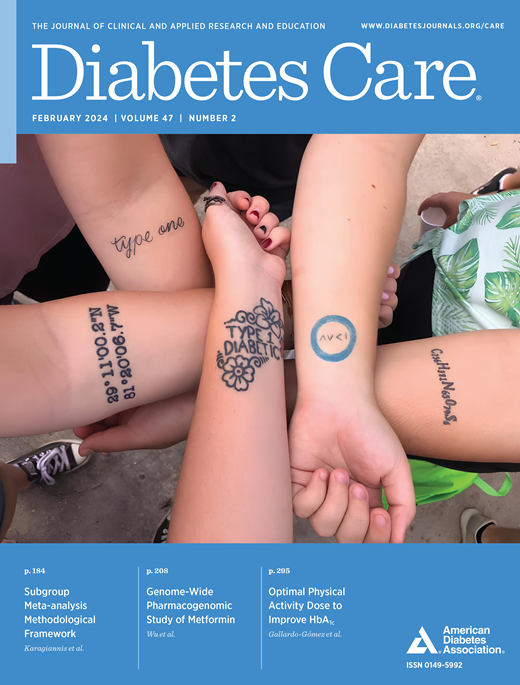在医院环境中使用连续血糖监测系统的共识考虑因素和良好操作要点
IF 14.8
1区 医学
Q1 ENDOCRINOLOGY & METABOLISM
引用次数: 0
摘要
连续葡萄糖监测(CGM)系统可频繁测量组织间液中的葡萄糖含量,已被广泛用于门诊糖尿病管理。在 2019 年冠状病毒病(COVID-19)大流行期间,美国和加拿大的监管机构暂时允许在医院使用 CGM 系统,目的是减少医护人员接触 COVID-19 的机会,并限制个人防护设备的使用。因此,对医院使用 CGM 系统的研究成为可能。随着传感器精确度的提高,人们对在医院使用 CGM 进行糖尿病管理的兴趣日益浓厚。实验室人员和医疗保健专业人员必须确定如何将 CGM 的使用融入实践中。本共识指导文件旨在提供 CGM 系统在医院中应用的最新情况,包括来自检验医学、内分泌学和护理学的见解和意见。本文章由计算机程序翻译,如有差异,请以英文原文为准。
Consensus Considerations and Good Practice Points for Use of Continuous Glucose Monitoring Systems in Hospital Settings
Continuous glucose monitoring (CGM) systems provide frequent glucose measurements in interstitial fluid and have been used widely in ambulatory settings for diabetes management. During the coronavirus disease 2019 (COVID-19) pandemic, regulators in the U.S. and Canada temporarily allowed for CGM systems to be used in hospitals with the aim of reducing health care professional COVID-19 exposure and limiting use of personal protective equipment. As such, studies on hospital CGM system use have been possible. With improved sensor accuracy, there is increased interest in CGM usage for diabetes management in hospitals. Laboratorians and health care professionals must determine how to integrate CGM usage into practice. The aim of this consensus guidance document is to provide an update on the application of CGM systems in hospital, with insights and opinions from laboratory medicine, endocrinology, and nursing.
求助全文
通过发布文献求助,成功后即可免费获取论文全文。
去求助
来源期刊

Diabetes Care
医学-内分泌学与代谢
CiteScore
27.80
自引率
4.90%
发文量
449
审稿时长
1 months
期刊介绍:
The journal's overarching mission can be captured by the simple word "Care," reflecting its commitment to enhancing patient well-being. Diabetes Care aims to support better patient care by addressing the comprehensive needs of healthcare professionals dedicated to managing diabetes.
Diabetes Care serves as a valuable resource for healthcare practitioners, aiming to advance knowledge, foster research, and improve diabetes management. The journal publishes original research across various categories, including Clinical Care, Education, Nutrition, Psychosocial Research, Epidemiology, Health Services Research, Emerging Treatments and Technologies, Pathophysiology, Complications, and Cardiovascular and Metabolic Risk. Additionally, Diabetes Care features ADA statements, consensus reports, review articles, letters to the editor, and health/medical news, appealing to a diverse audience of physicians, researchers, psychologists, educators, and other healthcare professionals.
 求助内容:
求助内容: 应助结果提醒方式:
应助结果提醒方式:


